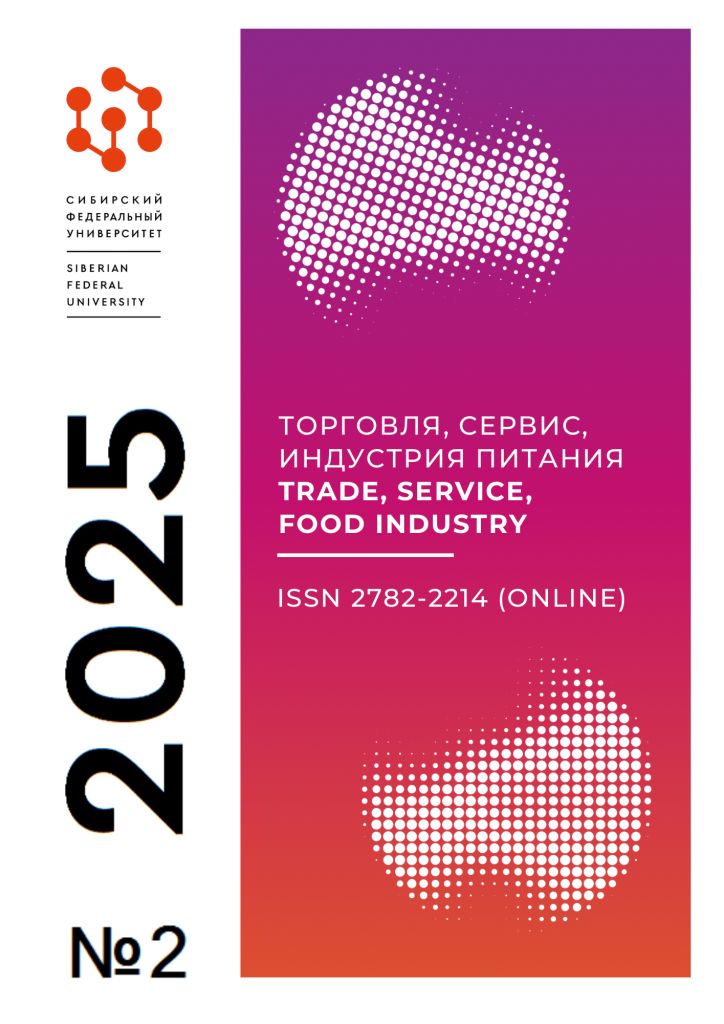Krasnoyarsk, Russian Federation
Krasnoyarsk, Russian Federation
Krasnoyarsk, Russian Federation
from 01.01.1993 to 01.01.2021
Krasnoyarsk, Russian Federation
Krasnoyarsk, Russian Federation
In recent years, there has been a significant trend towards healthy eating, which encourages consumers to choose natural and healthy products. One such drink is kombucha (Medusomyces gisevii), known for its probiotic properties and beneficial health effects. The uniqueness of kombucha lies in the possibility of its fermentation with the addition of various plant components, such as herbs, berries, fruits and vegetables. This allows you to create rinks with a variety of taste characteristics. The use of wild and cultivated berries of the Siberian region contributes to the enrichment of kombucha-based beverages with vitamins, antioxidants and organic acids, which has a positive effect on the human immune system. This study is devoted to the development of functional beverage formulations based on the culture fluid of the symbiotic fungus Medusomyces gisevii (kombucha) and natural juices from cranberries, lingonberries and Siberian cherries that grow in the extreme climatic conditions of Siberia. Within the framework of this study, the optimal concentrations of berry juices were determined (cranberries, cranberries and cherries), as well as experimentally established the optimal number of days of fermentation of the drink to achieve a harmonious taste. A tasting evaluation of the developed samples of functional beverages was carried out, and the influence of the used vegetable raw materials on the formation of a balanced taste profile of the drink was studied. Changes in the physico-chemical parameters of prepared beverages relative to the initial kombucha culture liquid, which served as a control, were studied. Changes in the titrated acidity, dry matter content, and ascorbic acid content were found. The development of functional beverages using local vegetable raw materials makes it possible to produce products with increased biologically valuable characteristics that allow us to position our products as a Siberian brand, making them more competitive.
SCOBY, kombucha, culture liquid, tea infusion, kombucha tea, probiotics, acetic acid bacteria, yeast fungi
1. Lovkis, Z., Morgunova, E. (2019). Functional food products. Science and Innovations, 12, 35–43.
2. Zhakova, K., Mironova, N. (2017). New developments in functional foods. Science and Innovations, 5, 41–47.
3. Serdyukov, R. I., Pershakov, A. Yu. (2023). Functional products and their state in Russia. World of Innovations, 3, 18–21.
4. Karomatov, I. D. (2014). Tea mushroom and its use in medical practice. European Science Review, 3, 47–49.
5. Frolova, Y. V. (2022). Russian market of fermented beverages based on tea fungus. Questions of Nutrition, 3, 115–118.
6. Mayser, P. (1995). The yeast spectrum of the “tea fungus Kombucha”. Mycoses, Jul.-Aug., 38(7-8), 289–295.
7. Kobelev, K. V., Volkova, T. N., Selina, I. V., et al. (2020). Non-saccharomyces yeasts in the production of low-alcohol beer. Beer and Beverages, 3, 8–11.
8. Rydin, A. A., Shanenko, E. F., Mukhamedyjanova, T. G., et al. (2019). Use of microbial cultures in technology of functional drinks. Health, Food & Biotechnology, 3, 118–131.
9. Greenwalt, C. J. (2000). Kombucha, the fermented tea: Microbiology, composition, and claimed health effects. Journal of Food Protection, July, 63(7), 976–981.
10. Alieva, E. V., Boltacheva, K. M., Timchenko, L. D., et al. (2018). Antibacterial potential and prospects for using kombucha. Ulyanovsk Medical-Biological Journal, 4, 166–171.
11. Kozyrovska, N. O., Reva1, O. M., Goginyan, V. B., de Vera, J.-P. (2012). Kombucha microbiome as a probiotic: a view from the perspective of post-genomics and synthetic ecology. Biopolymers and Cell, 28(2), 103–113.
12. Goreckaya, T. I., Pantyukhin, D. V., Polekhina, N. N. (2021). Dynamics of accumulation of biologically active substances in culture fluid of Medusomyces gisevi. Sciences of Europe, 62(2), 3–6.
13. Bondareva, N. I., Mitina, S. S., Avanesyan, S. S., et al. (2016). Content of ascorbic acid and rutin in fermentative liquid of kombucha (Medusomyces gisevi) under different cultivation conditions. Science. Innovation. Technology, 2, 147–158.
14. Velicanski, A. S., Cvetkovic, D. D., Markov, S. L. (2013). Characteristics of kombucha fermentation on medicinal herbs from Lamiaceae family. Romanian Biotechnological Letters, 18, 8034–8042.
15. Yashin, Y. I. (2010). Tea: Chemical Composition of Tea and Its Impact on Human Health. Moscow: TransLit Publishing House, 160.
16. Bauer-Petrovska, B., Petrushevska-Tozi, L. (2000). Mineral and water-soluble vitamin contents in the kombucha drink. International Journal of Food Science & Technology, 35, 201–205.
17. Jayabalan, R., Lončar, E. S., Vitas, J. S., Sathishkumar, M. A. (2014). A review on Kombucha tea – microbiology, composition, fermentation, beneficial effects, toxicity, and tea fungus. Comprehensive Reviews in Food Science and Food Safety, February 5, 23, 538–550.
18. Danielyan, L. T. (2005). Kombucha and Its Biological Features. Moscow: Medicine Publishing House, 176.
19. Teoh, A. L., Heard, G., Cox, J. (2004). Yeast Ecology of Kombucha Fermentation. International Journal of Food Microbiology, September 1, 95(2), 119–126.
20. Vitas, J. S., Malbasa, R. V., Grahovac, J. A., Loncar, E. S. (2013). The antioxidant activity of kombucha fermented milk products with stinging nettle and winter savory. The Chemical Industry & Chemical Engineering Quarterly, 19, 129–139.
21. Kovaleva, D. Z., Dojko, I. V. (2024). Opportunities for Using Local Plant Raw Materials in Kombucha Production. Collection of Scientific Articles of the Second International Scientific-Practical Conference, Orel, April 25, 2024. Orel: University Book Ltd., 22–26.
22. Leontiev, V. M., Zobnina, I. A., Dojko, I. V., et al. (2022). Organoleptic and Physico-Chemical Indicators of Culture Fluid of Medusomucus gisevii Lindau (Kombucha). Trade, Service, Food Industry, 2(4), 342–352.
23. Rybakova, G. R., Krotova, I. V., Dojko, I. V., et al. (2017). Systematic Approach to Managing Product Assortment and Quality. Krasnoyarsk: Siberian Federal University, Trading-Economic Institute, 232.
24. Menyailo, L. N., Gulenkova, G. S., Veretnova, O. Yu., et al. (2015). Scientific Foundations for Formulating a Range of Food Products with Predefined Properties. Krasnoyarsk: Siberian Federal University, Trading-Economic Institute, 232.
25. Danielyan, L. T. (2005). Kombucha and Its Biological Features. Moscow: Medicine Publishing House, 176.








